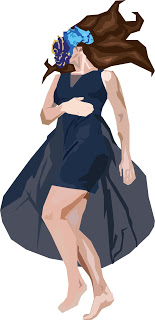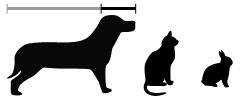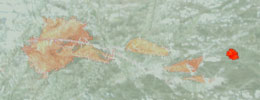Translate
Friday, December 15, 2017
Monday, December 11, 2017
Madi Hetico, Student Work
3D to 2D Image
Throughout the semester, I have reflected on who I am as an artist and how much I have grown since I started. With that being said, there has been many trials and tribulations as well as failures and successes. For my 3d to 2d image, I wanted to create something that reflected on all of the projects I made this semester, the good, the bad, the successful and the failures. I decided to create a montage of all my projects in order to create a new work. Within this piece, if one looks carefully, they can see everything I have made this semester, in a new way.
Cassie Harger, Student Work
3D to 2D Image
My favorite project to work on was the balsa wood sculptures. For the 3D to 2D Assignment I chose to use my balsa wood sculpture. The balsa wood sculpture simulated motion through rhythm. I enjoy how one object appears to influence another, despite it being frozen or stagnant. There is a beautiful irony. The above image depicts movement, yet the picture does nothing. I feel the image replicates how people get into a motion and go through their lives being stuck in a rhythm, and despite this motion they are not moving anywhere. It is easier to get into rhythm than to challenge yourself. The color purple is the color of wisdom. Though rhythm can be safe it does not challenge the self and is therefore unwise. Furthermore, each image appears to fall, which symbolizes how easy it is to fall into a cycle of repetition.
My favorite project to work on was the balsa wood sculptures. For the 3D to 2D Assignment I chose to use my balsa wood sculpture. The balsa wood sculpture simulated motion through rhythm. I enjoy how one object appears to influence another, despite it being frozen or stagnant. There is a beautiful irony. The above image depicts movement, yet the picture does nothing. I feel the image replicates how people get into a motion and go through their lives being stuck in a rhythm, and despite this motion they are not moving anywhere. It is easier to get into rhythm than to challenge yourself. The color purple is the color of wisdom. Though rhythm can be safe it does not challenge the self and is therefore unwise. Furthermore, each image appears to fall, which symbolizes how easy it is to fall into a cycle of repetition.
Original balsa wood sculpture. 6" x 3" x 4"
Zack Smith, Student Work
3D to 2D Image
This illustration is to show just how far you can reach if you just push through the struggles in pain in life and just soar. This builds off the meaning of the Masked Identity project, this illustration shows how when you push through the sadness, pains, and struggles in life, you not only grow as a person, but you become so much stronger and how the sky is the limit. The illustration gives a sense of hope to those who are struggling in their life and encourage them to push past it to gain an inner strength and confidence that will make them soar.
For the process, I first took the original image from my Masked Identity project and took it to photoshop. In photoshop, I used the magnetic lasso tool to select the body, the inverted the selection as to delete the background and hair from the model. I then took the photoshopped image to illustrator, sized and placed it on the background layer, then locked it in place. After that, I started creating the basic shapes of the body and mask. Once I had the basic shapes, I then created shapes to go on top of the basic form that showed where shadows and highlights were on the body. Once all the shapes were in place, I used the eyedropper tool to give the shapes correct coloring. When the body was finished, I deleted the image from the background and was able to add the hair and background and edit as needed.
Making the mask from wire, masking tape, tracing paper, gel medium, ink and gold paint.
Dani Sanders, Student Work
3D to 2D Image
I took a picture of one of my sculptures from the balsa wood project and turned it into an art magazine cover for the month of September. The magazine is titled Dépaysé, which is a French term that describes the feeling of a person being out of their comfort zone.
Original sculpture made from balsa wood and straight pins.
Friday, December 8, 2017
Saturday, December 2, 2017
Saturday, November 4, 2017
Matt Conner, Student Work. Response to Touch Chapter, A Natural History of the Senses.
The Feeling Bubble
"The bubble is our skin. But the skin is also alive, breathing and excreting, shielding us from harmful rays and microbial attack, metabolizing vitamin D, insulating us from heat and cold, repairing itself when necessary, regulating blood flow, acting as a frame for our sense of touch, aiding us in sexual attraction, defining our individuality, holding all the thick red jams and jellies inside us where they belong." -Diane Ackerman
Statement:
The drawing reflects upon the idea that the body serves as a malleable shield, protecting the body and everything in it from the chaos surrounding it. Such chaos can bring harm to the body or cause it to collapse.
The Code Senders
"Thick, onion-shaped sensors, they tell the brain what is pressing and also about the movement of joints or how the organs may be shifting their position when we move." -Diane Ackerman
Statement:
With this drawing I was thinking how touch is heavily associated with touch receptors and nerves which all correlated back to the brain to provide the sensation and information on touch.
Monday, October 30, 2017
Oregon's Animation Magic
Click on link below to watch video.
http://www.opb.org/television/video/cove-season-18-episode-17-oregons-animation-magic-mifudv/
Rose Bond is an artist featured in the above documentary video. Bond's website below as well as two videos that demonstrate her work.
http://rosebond.com
Labels:
3D to 2D Artists,
Animation,
Design Careers,
Video
Saturday, October 14, 2017
Monday, August 28, 2017
Thursday, August 24, 2017
Student Blogs, Fall 2017
9:00 Class
Rhiannon Alter
Christian Ard
Jourdyn Cluver
Ashley Floyd
Cassandra Harger
Madi Hetico
Rae Hull
Coeltryn Kirkland
Vincent Lendering
Caroline McClellan
Erin Moutz
John Roberts
Emily Seaford
Stephanie Simone
Zachary Smith
Griffin Torrey
1:00 Class
Julia Ailes
Emily Brown
Karese Burrows
Heather Callahan
Matt Conner
Levi Dobson
Gabi Galban
Summer Hartenstine
Zach Jacques
Hannah Lewis
Sasha Lute
Travis May
Connor Mathews
Madison Montanus
Dani Sanders
Meghan Vargas
Rhiannon Alter
Christian Ard
Jourdyn Cluver
Ashley Floyd
Cassandra Harger
Madi Hetico
Rae Hull
Coeltryn Kirkland
Vincent Lendering
Caroline McClellan
Erin Moutz
John Roberts
Emily Seaford
Stephanie Simone
Zachary Smith
Griffin Torrey
1:00 Class
Julia Ailes
Emily Brown
Karese Burrows
Heather Callahan
Matt Conner
Levi Dobson
Gabi Galban
Summer Hartenstine
Zach Jacques
Hannah Lewis
Sasha Lute
Travis May
Connor Mathews
Madison Montanus
Dani Sanders
Meghan Vargas
Saturday, August 19, 2017
National Taiwan University of the Arts
Three students of the national taiwan university of the arts have created 100 popsicles made from polluted waters of taiwan’s lakes, rivers, beaches and ports to raise awareness on the problem of pollution. setting aside the flavor, the polluted water popsicles contain collected sewage samples that were first frozen and then preserved in polyester resin. Wrapped in packaging also designed by the team, the project highlights the contrast between what is beautiful and what is problematic for the environment.
Elements & Principles of Art
Elements of Art
Line
Shape / Form
Color
Value
Texture
Space / Perspective
Space refers to the area in which art is organized. Perspective is representing a volume of space or a 3-dimensional object on a flat surface.
Space refers to the area in which art is organized. Perspective is representing a volume of space or a 3-dimensional object on a flat surface.
Principles of art
Pattern
Rhythm / Movement
Proportion / Scale
Balance
Unity
Emphasis
Emphasis refers to the created center of interest, the place in an artwork where your eye first lands.
Emphasis refers to the created center of interest, the place in an artwork where your eye first lands.
Labels:
Elements and Principles Chart
Subscribe to:
Posts (Atom)























































